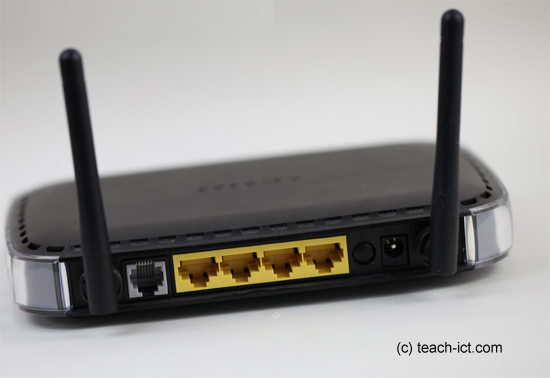6. Wireless communication
This form of communication makes use of radio waves in order to transmit and receive information.
With digital data transfer in mind, a number of standards have been developed. Each one specifying the protocols to be used and the maximum bandwidth it can support. These are called the IEEE 802.11 standards.
| Standard | Outdoor range | Indoor Range | Max Bandwidth |
| 802.11b | 140 m | 38 m | 11 Mbps |
| 802.11g | 140 m | 38 m | 54 Mbps |
| 802.11n | 250m | 70m | 150 Mbps |
The latest standard as shown above is 802.11n offfering nearly twice the range of earlier standards and nearly three times the bandwidth. When you buy wireless network equipment such as a wireless router make a note of the standard it supports.
In addition to the wireless standards, a group of international companies have banded together to create an alliance. It is called the Wi-Fi Alliance and it owns the trademark term 'Wi-Fi'. Its main purpose is to ensure that all equipment using the term 'Wi-Fi Certified' are compatible with one another.
Wi-Fi is widely used for LANs and WANs as it does not need any cabling to be laid down. It does need a device called a Wireless Access Point or WAP to be present on the network to handle the radio traffic. WAPs are commonly called 'hotspots' and can be found in airports, stations, cafes, library and other public spaces.
Most laptops are WiFi enabled along with other devices such as PDAs, netbooks, smartphones, e-book readers, game consoles and music players.
Uses
- Connecting to an organisation's Local Area Network
- Connecting to the Internet through a hotspot
- Smartphones and PDA connecting to the internet
- Wirelessly downloading electronic books into a reader
- Wirelessly streaming music throughout a home
- Wi-Fi enabled printers
- Games consoles to connect to the Internet
Advantages |
Disadvantages |
|---|---|
| No need for physical cables | Slower than cabled networks e.g. 54 Mbps compared to the 1000 Gbps that Gigabit Ethernet offers |
| The laptop or device can work anywhere within range of a WAP | Requires a Wireless Access Point (WAP) to be present |
| Can work through walls and on different floors as long as the radio signal is not too weak | Requires encryption to ensure data privacy |
| Smartphones can roam the Internet through the home network without incurring expensive 3G charges | It can only support a limited number of simultaneous connections so not so good as a company-wide LAN |
| Sufficient bandwidth for most Internet use although streaming video is more of a challenge_blue | Performance depends on the structure of the building and any obstacles there may be weakening the radio signal |
| Wi-Fi certified devices are guaranteed to be compatible |
challenge see if you can find out one extra fact on this topic that we haven't already told you
Click on this link: WAP and Wi-Fi
